How new self-driving vehicles in Singapore are tested before they hit the roads
Sign up now: Get ST's newsletters delivered to your inbox
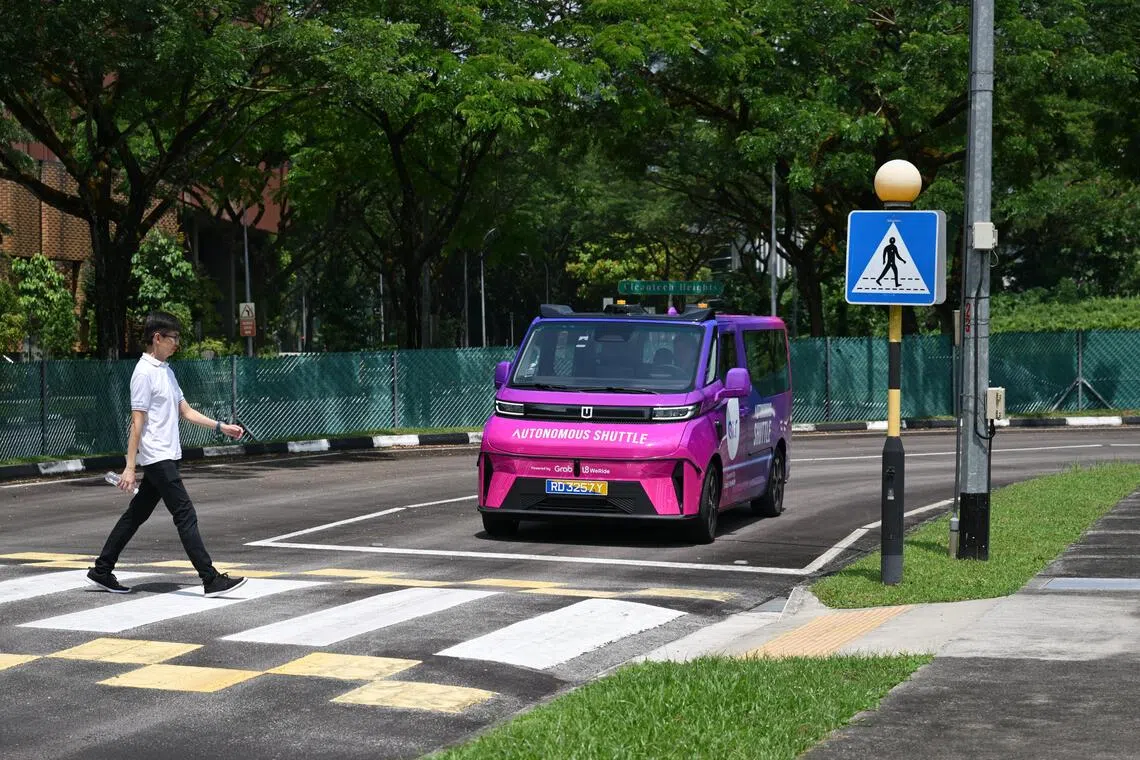
Developers of self-driving vehicles have to complete their first test of basic manoeuvres on a track modelled after regular public roads.
ST PHOTO: NG SOR LUAN
Follow topic:
- Self-driving vehicles undergo "Milestone One" at NTU, a driving test mimicking Singapore roads, assessing obstacle reaction and emergency stops.
- Grab and WeRide's self-driving shuttle passed Milestone One after 1.5 months.
- The NTU centre ensures AVs adapt to Singapore traffic rules, as many fail initial tests due to unique local road features like yellow boxes.
AI generated
SINGAPORE – Before self-driving vehicles can start plying the roads here, they need to pass a series of tests, starting with one similar to a driving test for motorists.
At a 1.8ha circuit at the Centre of Excellence for Testing and Research of Autonomous Vehicles at Nanyang Technological University (NTU) in Boon Lay, developers of self-driving vehicles have to complete their first test of basic manoeuvres on a track modelled after regular public roads.
This first test, known as “Milestone One” in the industry, also examines an autonomous vehicle’s (AV) ability to stop and react to stationary and moving obstacles, as well as its capacity to make emergency stops.
On Sept 25, The Straits Times observed one of the first self-driving shuttles in Punggol
The shuttles underwent training and preparatory works over 1½ months before they passed the test.
The five-seater vehicle decked in bright purple livery was capable of detecting passengers and objects on the road through its 11 cameras and four Lidar sensors fitted all around its exterior. A Lidar sensor uses lasers to measure distances and create detailed 3D maps of the surroundings.
Some of the obstacles it manoeuvred around while observing traffic rules were a jaywalking dummy pedestrian, a human pedestrian walking across a zebra crossing, and a stationary dummy in the middle of the road.
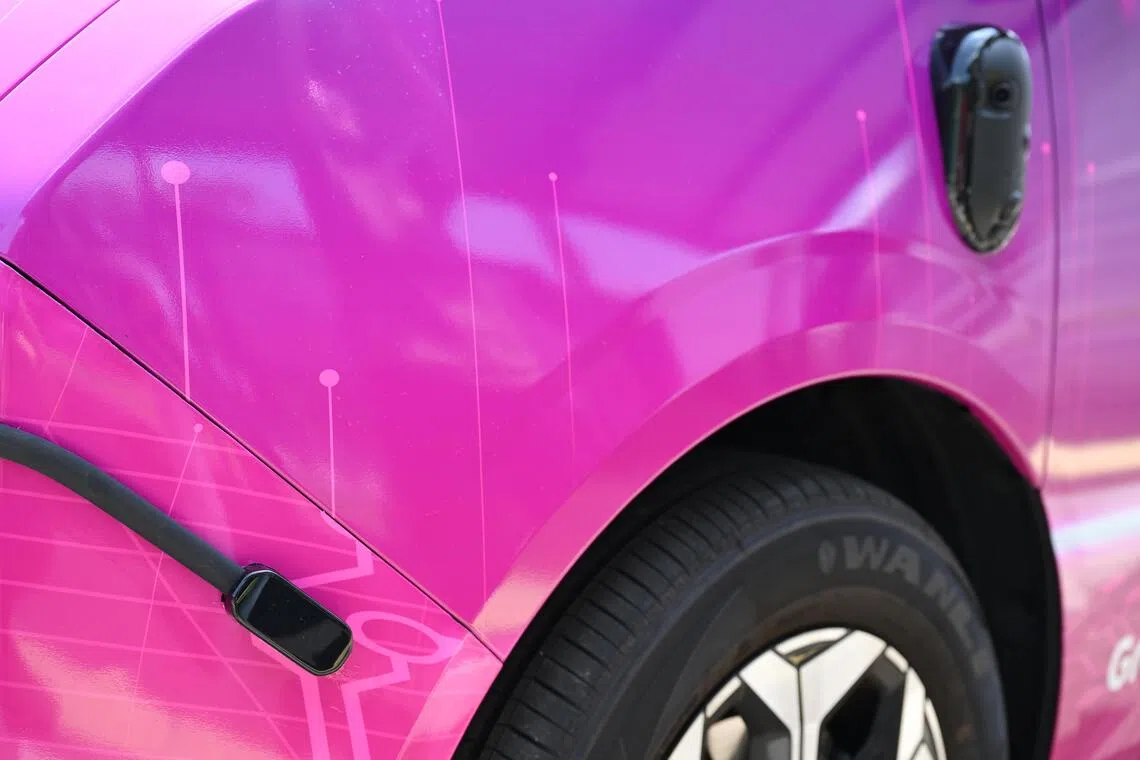
The five-seater self-driving vehicle is equipped with 11 cameras and four Lidar sensors fitted all around its exterior.
ST PHOTO: NG SOR LUAN
The self-driving vehicle also responded correctly to various traffic light colours – stopping when the light was red, slowing down when it became orange, and moving forward when it turned green.
Grab and WeRide will partner to offer the first route available to the public in 2026 – a 10km, 35-minute round trip connecting residents from Matilda Court and Punggol Clover to the polyclinic at Oasis Terraces via Punggol Plaza.
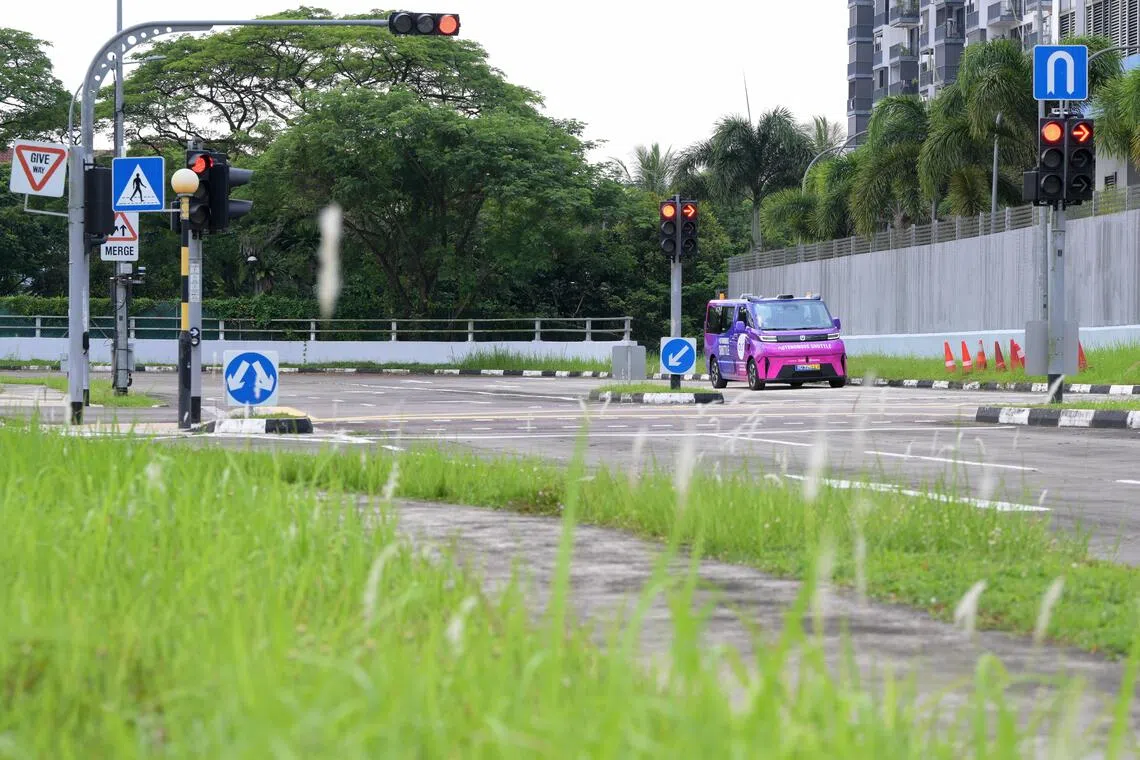
The self-driving vehicle was able to stop when it detected that the traffic light had turned red.
ST PHOTO: NG SOR LUAN
Speaking to the media on Sept 25, Mr Niels de Boer, senior programme director of the centre and chief operating officer of the Energy Research Institute at NTU, said the circuit is one of the very few off-road locations designed to mimic roads in Singapore, allowing for the safe testing of self-driving vehicles.
Each test at the circuit takes about five hours, but a test report can take up to a week to be finalised if developers need to answer additional questions regarding the vehicle’s performance.
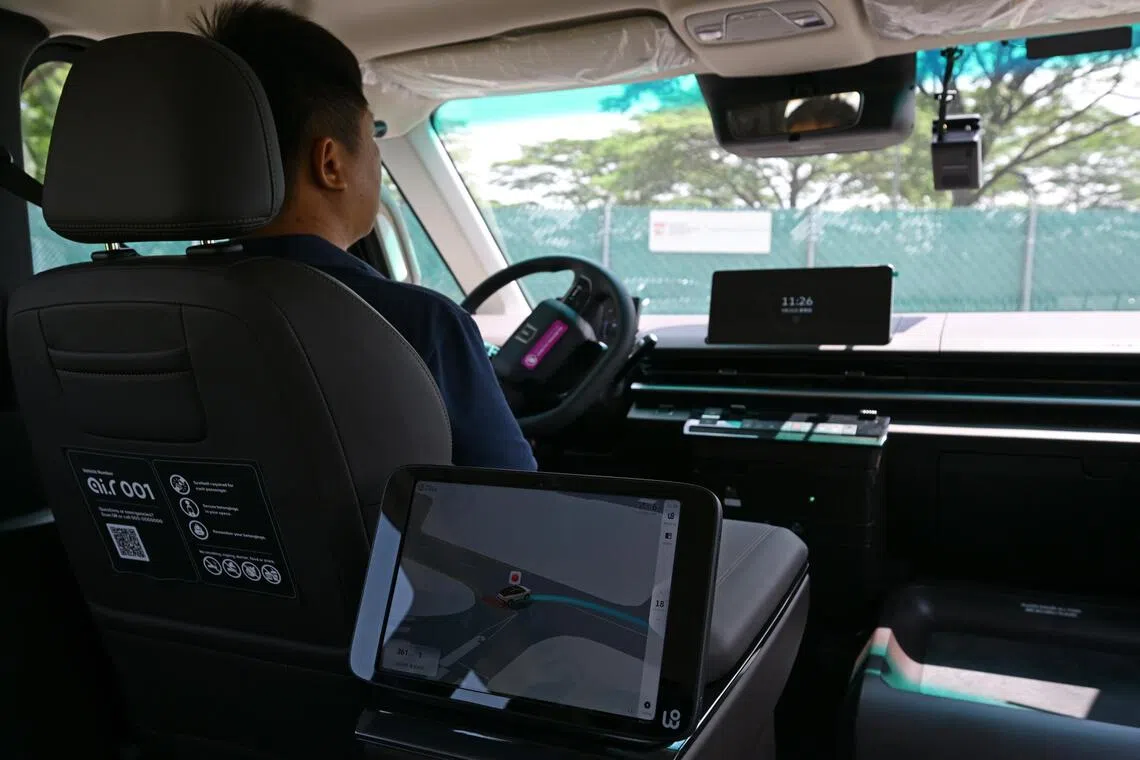
Each test at the circuit takes about five hours, but a test report can take up to a week to be finalised if developers need to answer additional questions regarding the vehicle’s performance.
ST PHOTO: NG SOR LUAN
Noting that many of the AVs tested here were developed overseas, Mr de Boer said it is important to make sure these vehicles have adapted properly to Singapore’s traffic and its rules, as well as the roads.
“Traffic behaves differently everywhere. Traffic lights have small differences. We have yellow boxes, which most countries don’t have. We see – quite often – that vehicles don’t recognise the small turning arrow, because the turning arrows don’t exist in many other countries,” he added.
Revealing that the centre had already completed 104 assessments for self-driving vehicles under the Land Transport Authority’s (LTA) testing framework, Mr de Boer said this meant that each vehicle failed the test at least once on average, given that over 50 AVs have been authorised to operate on public roads.
They include a self-driving shuttle bus at Resorts World Sentosa Marina coastal area
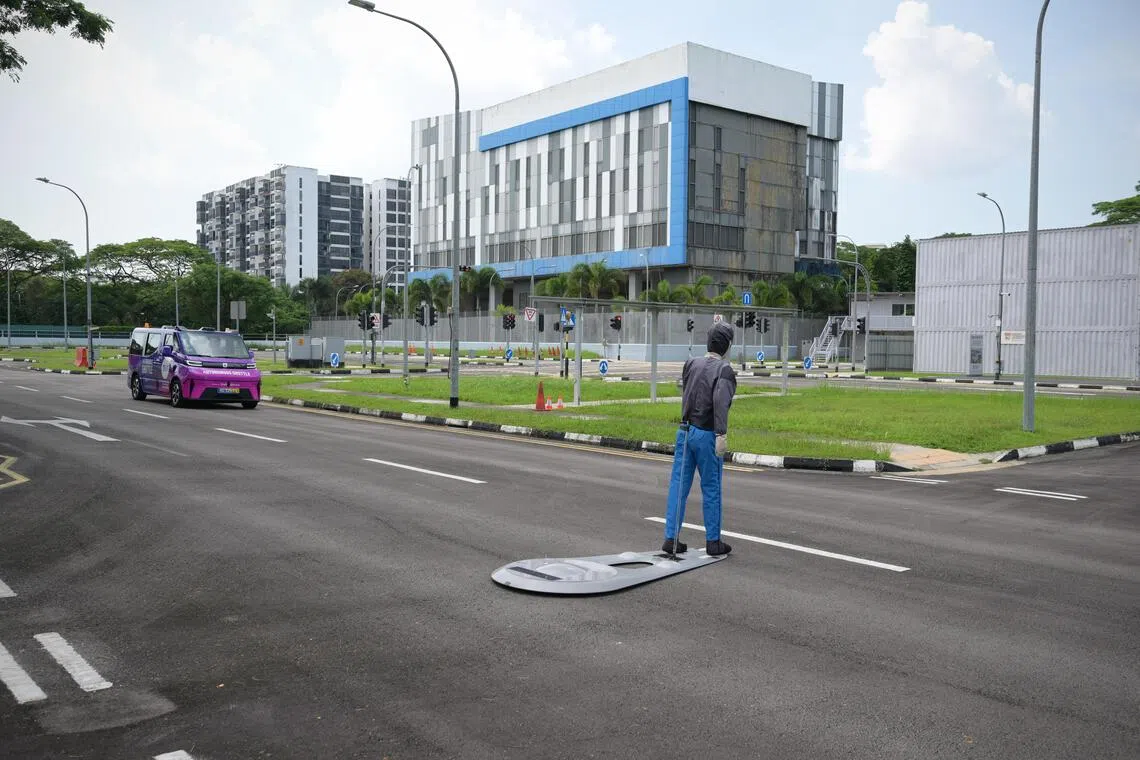
One of the obstacles the self-driving vehicle manoeuvred around while observing traffic rules was a jaywalking dummy pedestrian.
ST PHOTO: NG SOR LUAN
On the failures, Mr de Boer said that in the beginning, many developmental vehicles built for research purposes by universities were tested at the centre.
But it now sees comparatively more advanced vehicles meant for full commercial deployment, so the failure rates are lower than in the early days, he added.
Once they have completed the first test, developers have to put up a demonstration of their self-driving vehicle along their designated routes without passengers, before taking an assessment to test their ability to control the vehicle remotely, among others.
The centre is looking to double the number of tests it is doing, by working with LTA to look into batch testing of self-driving vehicles.


